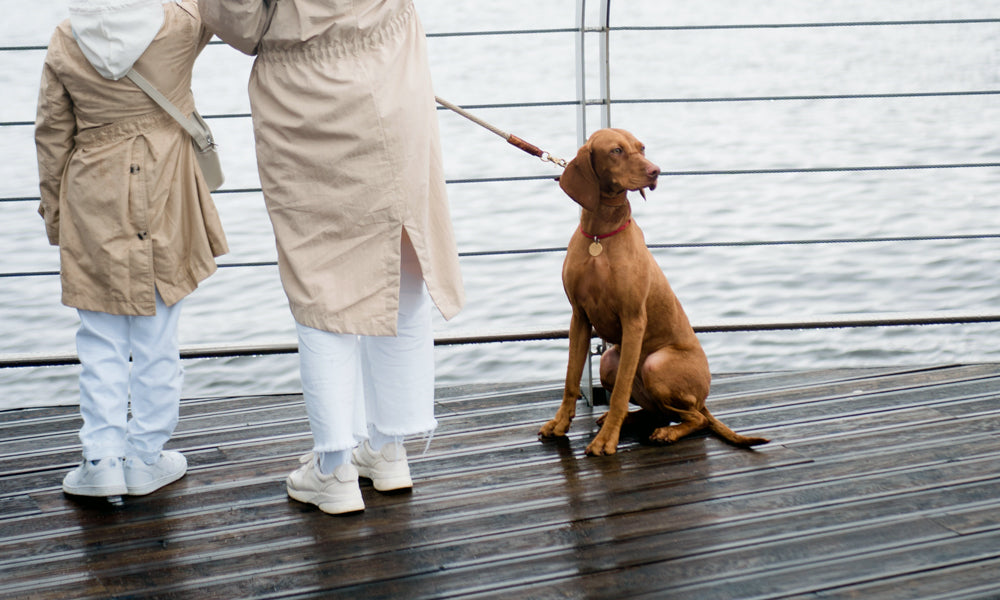
What to expect when travelling abroad with your pet and how to plan for your trip
Last week we looked at the legal requirements for travelling abroad with your dog – which have changed a little since Brexit, in case you are planning a trip. This week we’re looking at all the practical stuff that you need to consider as well, before heading overseas with your four-legged friend.
Before you go, you’ve got to ask yourself, is this going to be the best thing for your dog. We know that since lockdown, people and their animals have become inseparable and more people than ever are taking their dog on holiday in the UK, taking them to work, to restaurants and everywhere else that they go, but is an overseas trip really going to be the best thing for your dog?
If you’re driving, will they be OK on a long car journey? If you’re flying, will they be OK travelling by plane? How will they cope with any extreme difference in temperature at your destination (hot or cold?) Are you taking them for you, or for them? None of us want to place our dog in kennels but if you can, get someone to look after your dog or housesit with them while you are away this could be the best solution for them and cause the least disruption or stress for both of you too.
However, having said all that, if you've weighed up the pros and cons and have decided to bring pooch along too, you are going to have to make sure you have the right paperwork for your destination (see last week’s post for more details and links to official information) and that the place that you are travelling to is going to be dog-friendly, with the right kind of facilities for your pet.
 Dog in the car photo by Erik Mclean on Pexels
Dog in the car photo by Erik Mclean on Pexels
Things to consider prior to traveling with your dog
- Is the accommodation dog-friendly
- Is there access to parks or other open spaces where your dog can relieve themselves? Not all parks allow dogs so it is important to check before you go.
- Are the beaches dog-friendly, are dogs allowed? sme beaches have seasonal restrictions and only allow dogs during autumn/winter when there are less tourists around.
- Can you take them along to restaurants or tourist attractions? and if not will they be cool and comfortable being left home alone in unfamiliar surroundings?
- Is it going to be too hot for your dog to be out and about with you? If so what can you do with them - you might not want to leave them alone in a holiday apartment if they are likely to trash it!
- Will there be access to a vet? Locate the local vet practice before you travel and make sure you have their number in case of emergencies
- Are there any diseases that we don’t have in the UK which may be prevalent in the area that you are travelling to? If so, these could place you dog at risk of health issues and you will need to take precautions to protect them.
- Consider the length and type of journey and how it might affect your pet. Is there anything you can do to make it more comfortable for them?
 Dog friendly restaurant photo by Los Muertos Crew on Pexels
Dog friendly restaurant photo by Los Muertos Crew on Pexels
Taking your dog via Eurotunnel
According to the Blue Cross, this is the safest way to travel abroad with your dog and they actively encourage pet owners to use the Eurotunnel to travel abroad where possible. Although Eurotunnel rules state that your dog must stay in the car, you can stay in the car with them and the Blue Cross also suggests that the journey is usually far cooler and quicker than travelling by any other means. There are also special exercise areas for dogs at each end of the crossing so your dog can travel in comfort and stretch their legs when necessary.
The only downside is that there may be an additional charge for bringing the dog but if they are a part of your family we’re sure you’ll just think that’s par for the course anyway.
Taking your dog via ferry
A lot of people take their dog abroad via ferry and depending on where or how far you are going, you may find that your ferry has dog-friendly cabins where your dog can stay with you for the whole journey. They may also have dog-friendly areas and allow dogs as foot passengers. However, even with dog friendly areas, some ferry companies may ask you to keep your dog muzzled and some require your dog to stay in the car on their own, which they may find stressful.
Not all ferry services allow dogs, and those that do may charge you so make sure you have planned for your pooch well in advance, don’t just show up and hope for the best!
When you get to the other end, they will scan your dog’s microchip so it’s worth getting your vet to scan your dog before you go just to make sure that it is easily readable and prevent any potential problems which may ruin your trip.
 Vizsla on deck, photo by Ron Lach on Pexels"
Vizsla on deck, photo by Ron Lach on Pexels"
Taking your dog on a plane
Very few airlines will allow dogs to board and sit with their owners on a flight, most have to travel as cargo in the hold of the aircraft which can be incredibly stressful for them, particularly if they are not used to being apart from you or placed in a crate. So think carefully before opting to travel this way, although in some cases of course it could be the only way to get to your destination.
What to pack for your dog
If you’re driving, make sure you have a crate or a secure harness for your dog so they are secure inside your car, different countries may have different laws for driving with dogs, as we do here in the UK so make sure you know the rules for each country you are travelling to. Plan regular exercise and toilet breaks along your route and take enough water for the entire journey. You should also pack:
- Some of their favourite treats and enough food for the trip in case you can’t find their usual brand when you arrive.
- Their bed and comfy bedding for them to travel with and sleep on once you arrive.
- Familiar toys to reassure them
- Plenty of poo bags
- Water bowl
- Collar and lead – make sure their name tag also has your mobile phone number on it – or the number of where you are staying.
- A muzzle if required
If you don’t already have pet insurance it may be a good idea to get some that covers your pet for travel, accident and illness abroad. Better to be safe than sorry.
So, quite a lot to think about but that doesn’t mean it isn’t do-able. Just try to think of everything that might happen and plan ahead to make sure that your holiday is safe and fun for you and your dog. If you’ve travelled with your pet before, we’d love to hear about your experiences, please share your pet travelling tips in the comment section below.
Main photo by Dominika Roseclay on Pexels
